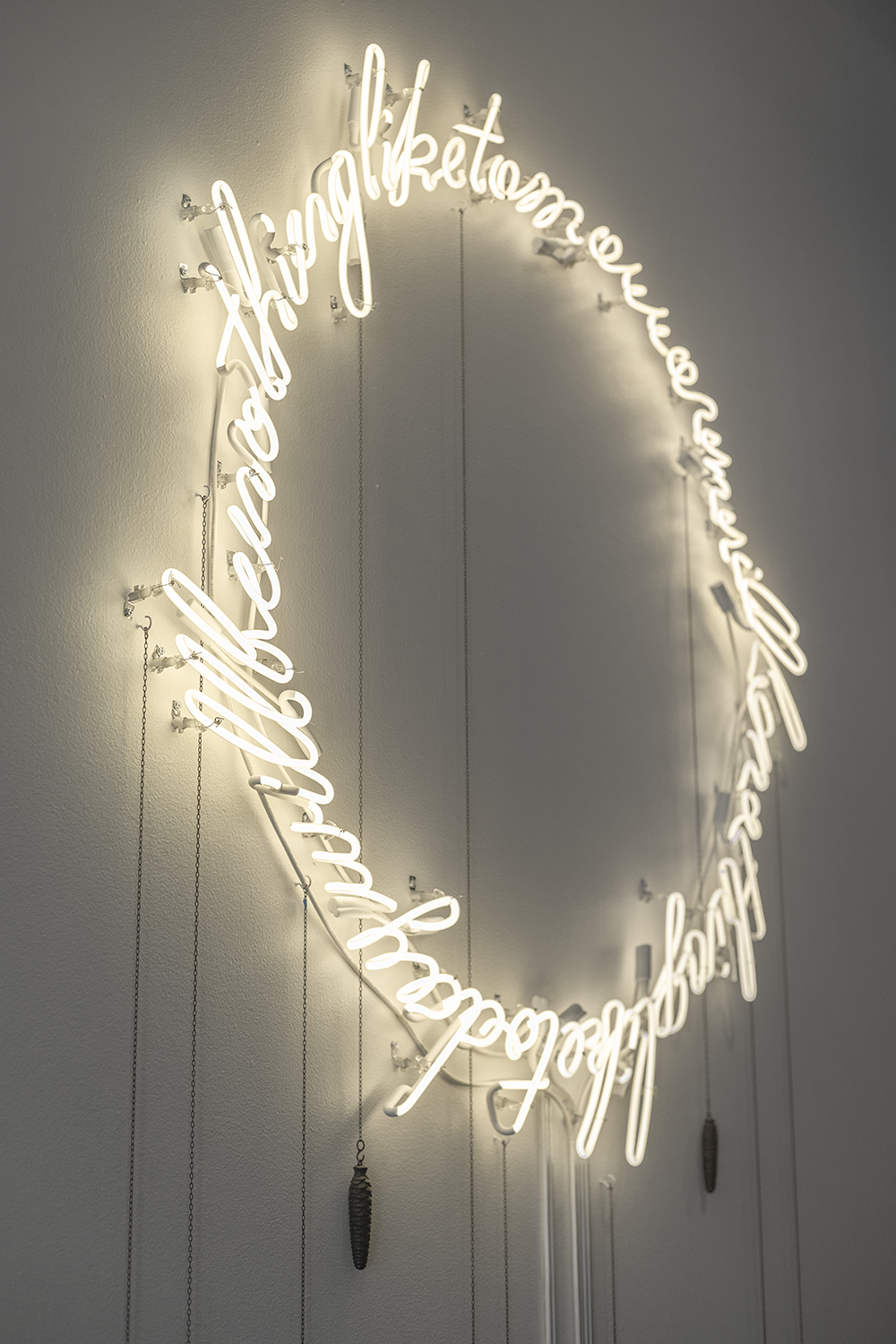Dancer turned artist Madeline Hollander is best known for performance works that explore the evolution of human body movement and the intersection between choreography and visual art. She has begun to show her pieces in galleries and museums, creating large-scale, technically sophisticated installations, two of which are now presented at Jeffrey Deitch. A neon work, Tomorrow Will Be Nothing Like Today Will Be Nothing Like Tomorrow (2022) forms an italic script circle five feet in diameter of the title words. Weights and chains from vintage cuckoo-clocks hang from and surround the neon sign, calling attention to the passage of time and the uniqueness of each day. The association with clocks and time is also key to Sunrise/Sunset, the installation that fills the main space.
Originally commissioned by BMW and presented at Frieze London in 2021, Sunrise/Sunset builds on a previous installation shown at Bortolami Gallery in New York in 2020. In that piece, titled Heads / Tails: Walker and Broadway, Hollander collected headlights and taillights from junkyards and collision centers in Los Angeles and repurposed them for the site-specific installation where they were installed salon-style on opposing walls. The headlights were programmed to correspond to the sunrise and sunset of a given location, changing from their fog setting to bright depending on the time of day. In essence, they were always on. The taillights were synched to a traffic light on Walker Street and Broadway in Manhattan. Whenever the traffic light turned red, the taillights in the installation would go on. When the traffic light turned green, the taillights would go off. The installation became a visual representation of continually changing time and traffic flow.

Madeline Hollander, Tomorrow Will Be Nothing Like Today Will Be Nothing Like Tomorrow, 2022. Courtesy of the artist and Jeffrey Deitch.
Sunrise/Sunset comprises 96 BMW automobile headlights installed on a curved wall in a grid that is four-lights-high by 24-lights-across to correspond to the 24 time zones on Earth. The headlights are mapped to each of these different zones, metaphorically becoming a clock that tracks sunrises and sunsets across the globe—turning on when it becomes night and off when it becomes day. The rhythm of the specific lights that are illuminated undulates in synch with a score using the different sounds made by the various BMW turn signals, created by the artist’s sister, composer Celia Hollander.
As light and sound fill the space, viewers are drawn to the nuances of difference—the design and structure of each headlight and the relationship between the blinking orange and steady white LEDs. Through the day the sounds intensify and lull, based on the movement of the illumination as it makes its ways from left to right, from east to west. The work is a technological achievement, connecting the individual headlights so that they perform a dance of light, and although the installation is meant to reference “global connectedness” and “the body in motion,” it also can be seen as a wall of eyes; as the headlights resemble faces, they can also be seen as the people of the world.


